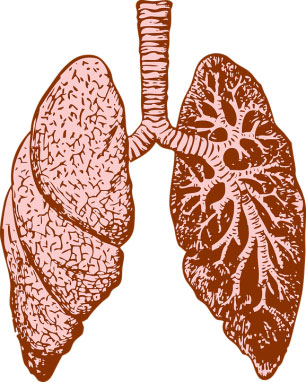COVID-19 and Respiratory System Disorders Explained

The SARS-CoV-2 virus is the virulent strain originally responsible for setting off the pandemic worldwide. Primarily a respiratory illness, usual symptoms associated with a COVID-19 infection are fever, sore throat, fatigue and cough.
Although the timely arrival of the coronavirus vaccines has given us a means to bolster our immune system and ward off chances of infection or severe complications, the possibility of critical symptoms to develop during the course of the illness remains a reality. This is true especially in the case of immuno-compromised individuals with chronic health concerns such as diabetes, cancer, etc.
It's important to note that lung complications from COVID-19 are a leading cause of death in the United States. Let’s take a look at some of the respiratory disorders that can develop after a COVID infection.
Pneumonia
The common symptoms of pneumonia are a productive cough and shallow, rapid breathing. The retention of fluid within the lungs' air sacs becomes limiting in that there is a reduced oxygen uptake. The fluid-filled sacs also become inflamed, resulting in chest pain.
In the caseof pneumonia that results from a COVID-19 infection, both the lungs are likely to be affected. Such a scenario almost always warrants hospitalization and immediate care.
Bronchitis
Bronchitis is characterized by inflamed linings of the bronchial airways, which are the tubes that allow air to and from your lungs. Resulting symptoms of bronchitis are cough and congestion inside the chest.
Mucus production also occurs in excess consequently narrowing out your respiratory passageways and causing strenuous breathing.

Acute Respiratory Distress Syndrome
Developing the ARDS is a potentially life-threatening scenario that necessitates an immediate hospitalization. Often an advanced stage of pneumonia, the acute respiratory distress syndrome is characterized by so much build-up of fluid within the lungs that they are no longer able to continue the circulation of oxygen within the body.
A type of lung failure, the ARDS is characterized by wheezing, low blood pressure, and extremely labored and/or rapid breathing, all of which indicates lung dysfunction. People that develop the syndrome have to be placed on a ventilator in order to have their oxygen supply supported.
Asthma
Asthma does not result from COVID-19, but it can be aggravated in the case of infection for people who have the ailment already. Asthma is a chronic respiratory disease marked by mucus production and narrowing of the airways, often in response to allergens.
Having COVID-19 can trigger an asthma attack, its symptoms ranging from tightness in the chest, strenuous breathing, coughing or wheezing. A moderate to severe case of an asthma attack can warrant immediate medical attention.
TelMDCare
We’re an online doctor healthcare service with licensed doctors that address your medical concerns virtually. If you’re seeking treatment for a COVID-19 infection or resulting lung injury and complications, book an appointment with us and receive a prompt consultation without the hassle of waiting. Our services are available in most US states.